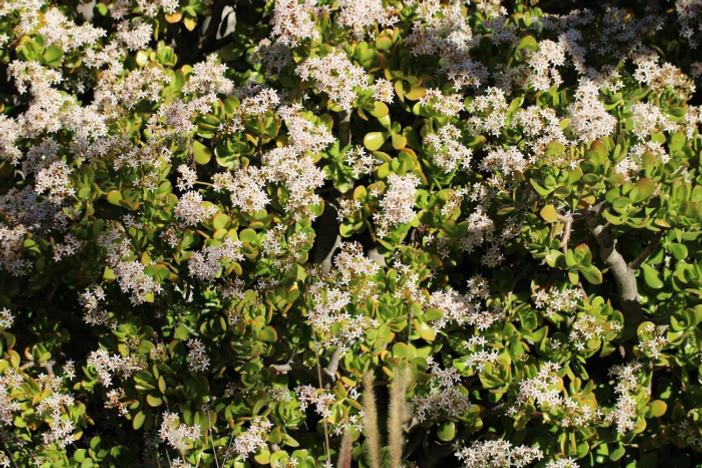Jade Plant
(Crassula ovata)
Jade Plant (Crassula ovata)
/
/

Photo by Easyscape
CC BY-SA 4.0






























































Estimated Native Range
Summary
The Jade Plant is valued for its ease of maintenance and ability to thrive in indoor conditions with minimal water. It is often used as a houseplant or in succulent gardens, rock gardens, and in xeriscaping. It requires a porous substrate with good drainage and prefers about 4–6 hours of direct sun or medium shade exposures with bright light. While it can tolerate light frost if the soil is dry, it is susceptible to overwatering, which can lead to leaf fall and root rot. In cultivation, it generally does best in part shade, with very low or low amounts of water, and in soils with fast drainage. Gardeners should be cautious as Crassula ovata can become invasive in some regions outside its native range.CC BY-SA 4.0
Plant Description
- Plant Type: Succulent
- Height: 3-6 feet
- Width: 2-3 feet
- Growth Rate: Moderate
- Flower Color: Pink, White
- Flowering Season: Spring, Winter
- Leaf Retention: Evergreen
Growth Requirements
- Sun: Part Shade
- Water: Very Low, Low
- Drainage: Fast
Common Uses
Bee Garden, Deer Resistant, Drought Tolerant, Edible*Disclaimer: Easyscape's listed plant edibility is for informational use. Always verify the safety and proper identification of any plant before consumption., Fire Resistant, Groundcover, Low Maintenance, Potted Plant, Rock Garden, Showy Flowers, Street Planting
Natural Habitat
Arid and semi-arid regions of southeastern Mozambique and southeastern South Africa
Other Names
Common Names: Lucky Plant, Money Plant, Money Tree, Kerky-Bush, Japanese Rubberplant, Baby Jade, Cauliflower-Ears, Jadeplant, Jadetree, Japanese-Laurel
Scientific Names: , Crassula ovata, Crassula argentea, Crassula obliqua, Crassula portulacea, Crassula nitida, Crassula articulata, Crassula lucens, Toelkenia ovata,
GBIF Accepted Name: Crassula ovata (Mill.) Druce